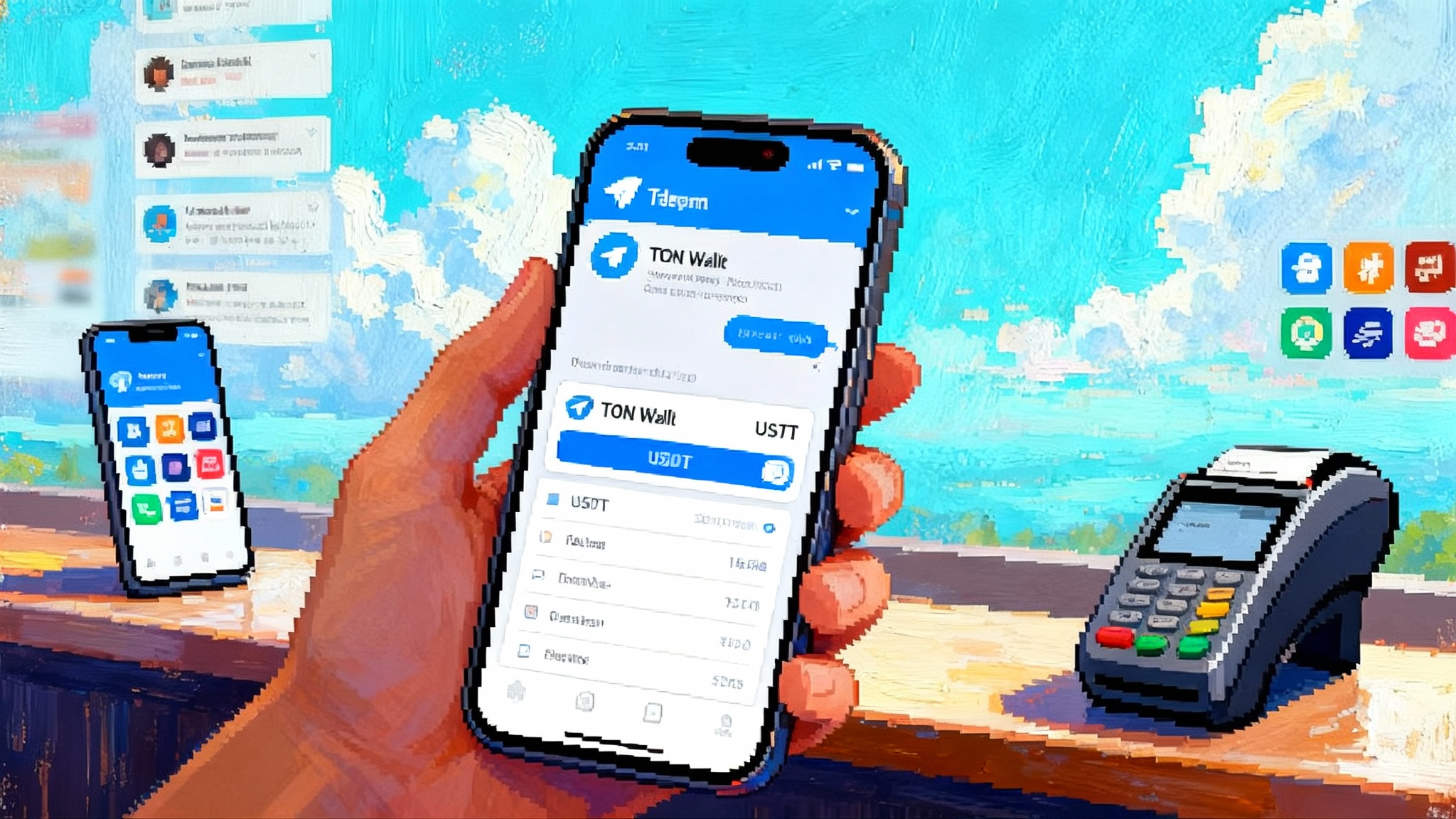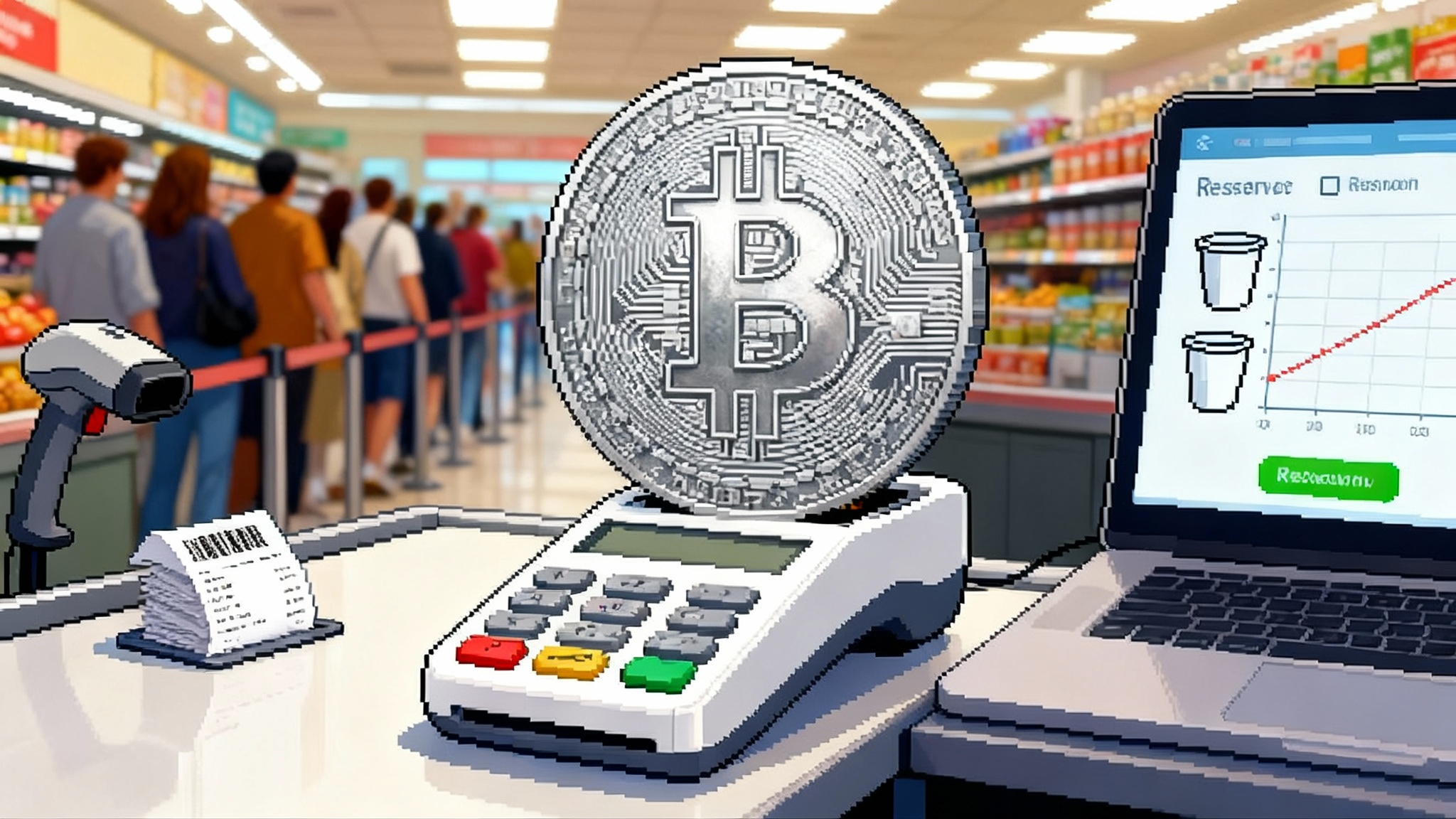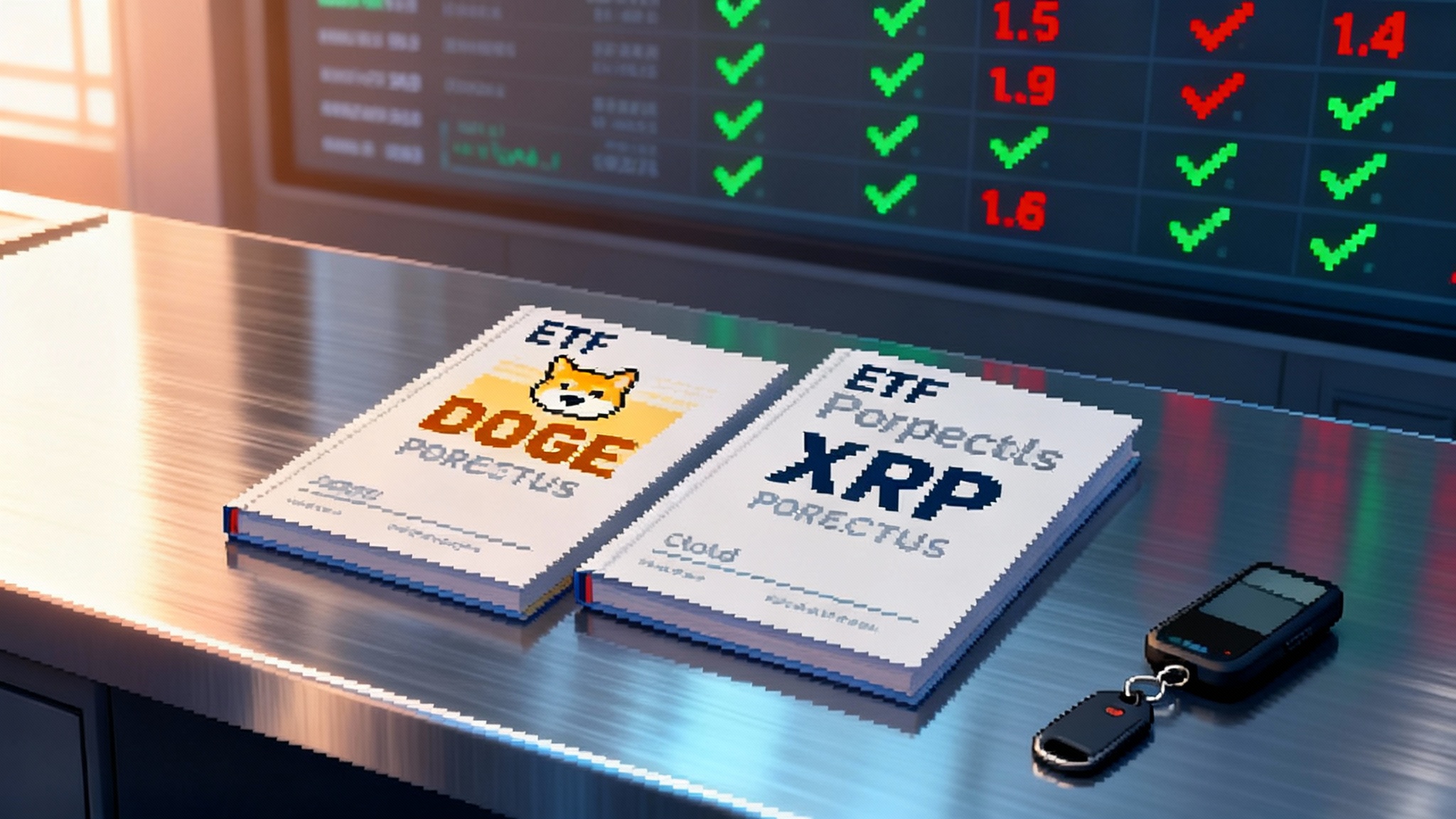Telegram’s TON Wallet Puts Crypto On-Ramp in U.S. Chats
Telegram is rolling out a self-custodial TON Wallet to roughly 87 million U.S. users, turning chats into checkout. Here is the UX, growth, and compliance playbook teams can ship in Q4 to capture the moment.

The moment messaging became crypto’s default on-ramp
It finally happened. Telegram is turning the chat window into the checkout line. In July 2025, Telegram began rolling out a built-in, self-custodial TON Wallet to roughly 87 million users in the United States, with functionality ramping through August. The move puts a crypto wallet inside a top five U.S. social app by monthly actives and flips the Web3 distribution model from standalone dapps to shipping directly inside the messenger people already use all day. Early market reaction tracked a lift in Toncoin and a spike in wallet curiosity, which CoinDesk on U.S. rollout captured well.
Telegram’s timing coincides with a platform-level standardization. TON is now the default chain for Telegram Mini Apps, and the official wallet connect protocol in that environment is TON Connect. The TON Foundation detailed this alignment earlier this year in a public announcement about making TON the exclusive blockchain for Mini Apps and platform pay-ins. See the TON exclusive partnership note for developer expectations.
This piece unpacks what the U.S. TON Wallet rollout changes for product builders, growth teams, and founders. We cover the new seedless split-key UX, the mini app growth loops that matter, in-chat payments and commerce, early traction signals to watch, and a pragmatic Q4 builder plan. We also flag platform risks that deserve board-level attention.
Why a messenger on-ramp is different
Onboarding is the killer feature. For a decade, crypto’s hardest problem has been getting people to the first funded transaction without breaking their brain on key management, gas, and chains. A messenger-native wallet changes the shape of that funnel.
- Intent is already present in chat. Friends plan a trip and want to split costs, a creator asks followers to tip, a game asks a player to claim a reward. The wallet is one tap away inside the same thread.
- Social context improves conversion. People trust requests that come from contacts and verified channels. This lowers the cognitive load versus switching to an unfamiliar app.
- Distribution is built in. New apps usually fight for App Store rankings, ads, and referrals. In Telegram, Mini Apps can be invoked by a link, a bot command, or a button in a channel post, so discovery is native to where conversations happen.
The result looks more like WeChat’s mini programs than a traditional crypto app store. It rewards teams that design for chat-first intent capture, not just for-token yield.
Seedless self-custody: the split-key model explained
Telegram’s wallet introduces a seedless recovery flow designed to feel familiar to mainstream users while preserving self-custody. Here is the plain-English version of how it works and why it matters.
- Two-part backup instead of a 12-word phrase. Instead of a seed phrase, the wallet uses a split-key backup. One shard is tied to the user’s Telegram account. The other is bound to their email. Recovering the wallet requires both pieces, so no single party holds the full key.
- Security and threat model trade-offs. Split-key lowers the risk of a one-shot seed phrase leak and makes social-recovery style support possible. It introduces dependencies on two identity factors that can be phished or hijacked, so security posture still matters. Use email multifactor and strong Telegram account security; hardware keys on the email account help.
- Compliance and control. A seeded wallet is easy to lose and hard to reset without a safe backup. A split-key flow creates a clearer path for account recovery events and support. For institutions or creators at scale, this can reduce churn and support costs without turning custody over to a third party.
If you are building Mini Apps, assume your best new users arrive with this seedless wallet by default. Do not force separate wallet installs or browser extensions unless you must. Let the default path be the happy path.
Mini App growth loops move to the front of the funnel
Telegram Mini Apps are small web apps that load inside Telegram and can be launched from chats, channels, and bots. With TON as the default chain, the whole Web3 user journey can start and finish in one surface.
Here are the loops that will matter most in Q4:
- Creator-to-commerce loop. Creators can drop a channel post with a claim button that opens a Mini App checkout in one tap. The wallet signs the transfer. The app issues a tokenized collectible, access pass, or in-game asset. The buyer shares it back into chat. Each step stays inside Telegram, so attribution is crisp and the loop is fast.
- Invite-to-earn loop. Referral mechanics work well in chat. When rewards settle instantly to a wallet the user already has, the delay that kills word-of-mouth disappears. Avoid spammy patterns. Focus on authentic invites with clear value.
- Tap-to-own game loops. Lightweight games that award on-chain assets for session milestones can now skip the hardest steps. Users can claim in a single flow without downloading a wallet or paying gas on an unfamiliar chain.
- Channel-to-cart loop. Channels with millions of subscribers can turn product drops into one-click carts. In-chat payment rails remove the checkout friction of web redirects and card forms.
Design principle: your first on-chain action should be socially native and feel like a chat action. Do not make people leave the conversation to find your value.
In-chat payments and USDT rails
In-chat transfers are the most obvious win. Sending value to a contact now feels like sending a file. Stablecoins make it usable. On TON, USDT rails handle volatility and settlement. If your product deals with balances, assume USDT is the default tender for most mainstream users, with Toncoin as the gas token and utility backbone. For U.S. policy context on stablecoins and retail payments, see the GENIUS Act on stablecoins and this primer on USDC vs Tether rules.
Smart product choices for the new rails:
- Price and balance in stable terms. Show a stablecoin balance by default and convert to fiat equivalents. Keep Toncoin visible for gas and staking, but do not force users to think in it at checkout.
- Cover or abstract gas where you can. Use sponsorships or meta transactions sparingly and explain them. The more users experience a clean send flow, the faster they trust the system.
- Map U.S. markets clearly. If you serve U.S. users, be explicit about what assets are supported, what is not, and what state-level restrictions may apply. Keep fee disclosures simple.
Practical UX notes for the wallet flow
You will see higher completion rates if you align with the wallet’s native affordances.
- One screen, one decision. Keep your Mini App’s signing steps minimal. Batch where sensible. Explain the why, not the how.
- Progressive disclosure. Let a new user do one safe action immediately. Move advanced features behind an explicit upgrade. Ask for notifications, contacts, or email only when needed.
- Clear recovery guidance. Link to a short explainer on split-key recovery inside your app. Set expectations up front: keep Telegram login secure and email MFA on.
- Human fallback. Add a support button in your Mini App that opens a chat with a human. People are trying new things. Give them a way to ask a question without leaving Telegram.
Early traction signals to watch
It is early days, but a few signals are already visible and worth tracking as proxies for adoption quality.
- Price and liquidity response. Toncoin’s price and volumes reacted to the U.S. wallet rollout. Market action is not product market fit, but it reflects new expectations about demand and utility.
- Wallet activation prompts. Telegram’s progressive rollout means some percentage of U.S. users will see call-to-activate banners. Track community chatter and qualitative feedback. Are users completing activation or dismissing it?
- Channel conversion. Creators testing wallet-gated perks or drops will share conversion anecdotes. Look for patterns by audience type and content vertical. Gaming and collectibles tend to be first movers.
- Support load. Telegram groups for Mini Apps and wallets often get flooded when a flow is confusing. If support chatter stays tame, it is a sign the seedless UX is doing its job.
Q4 builder playbook
You can capitalize on the new distribution model without overbuilding. Here is a pragmatic plan for the next two quarters.
- Nail your on-ramp in three steps
- Default to TON Wallet connect. Make TON Connect your first-class path and test it ruthlessly. Collapse extra steps. If you support other wallets for power users, hide them behind an advanced option.
- Offer a fiat on-ramp with one partner to start. Integrate a single, reputable provider for card on-ramps and KYC. Do not stack two or three at launch.
- Ship a guided first transaction. Give every new user a small, safe action in the first session. Claim a collectible, tip a creator, or swap a tiny amount.
- Build on USDT and abstract gas
- Use USDT on TON for sends, payouts, and pricing. It reduces mental overhead. Convert to other assets only when the user asks.
- Sponsor gas for first actions. Budget a small gas pool so first-time users do not hit a paywall while they learn.
- Offer bridges as a utility, not a headline
- If your audience holds assets on Ethereum, Solana, or other chains, integrate a reliable bridge behind the scenes and frame it as a convenience. Use clear warnings, capped amounts, and staged limits.
- Prefer native TON liquidity for day-to-day activity. Bridge only what you must.
- Turn Telegram Ads into acquisition experiments
- Use Telegram Ads to target channel lookalikes and country-level cohorts now reachable by the wallet. Start with small daily budgets and creative that shows the in-chat flow.
- Measure post-click behavior inside your Mini App. Track activation rate, time to first transaction, and retention by creative. Kill losers fast.
- Design channel-native promotions
- Use channel posts with deep links that open your Mini App to a prefilled action. A buy button that lands on a prebuilt cart is more persuasive than a homepage link.
- Partner with mid-tier creators first. They care about conversion and will iterate on copy and timing. Share clear revenue splits in USDT and pay daily.
- Ship safety from day one
- Put fraud screens into the UX. For high-risk actions, add a short confirmation that the user knows and trusts the counterparty.
- Add rate limits and anomaly detection. Slow down first-time large withdrawals. Add cool-off windows for password or email changes.
- Publish a clear recovery and support policy. Make it easy to find and written in plain language.
Platform risks you should model
The upside is huge, but platform risk is real. Keep these risks in your planning docs.
- App store policy shifts. Telegram runs on iOS and Android, and both stores have evolving rules for crypto features. Webview and mini app techniques can change with a policy update. Build an off-platform fallback for critical flows like account recovery and payouts.
- Fraud and impersonation. Chat-native surfaces are rich targets for scams. Expect copycat bots, fake channels, and inbound DMs that spoof your brand. Register official handles, verify channels, and add in-app warnings.
- Compliance scope creep. If you take custody, programmatically initiate transfers on behalf of users, or run a marketplace, you may trigger money transmission rules in U.S. states. Even if you do not, sanctions screening and suspicious activity monitoring help. For broader market access dynamics, see SEC ETF rule changes.
- Geographic fragmentation. The U.S. rollout is specific to U.S. Telegram users, but each country has its own rules. If you go global, segment features by jurisdiction.
- Bridge and liquidity risk. If you integrate cross-chain bridges, you inherit smart contract and liquidity risks. Keep limits tight and audit partners.
What this means for Web3’s next chapter
A crypto wallet in the chat app most used by crypto-curious consumers changes the default path to a first transaction. It places Web3 a single tap from a creator post, a group chat, or a friend’s request. It also reorganizes the builder landscape. The teams that win will not be the ones with the most complicated token designs. They will be the teams that master chat-native UX, relentlessly test Mini App loops, and ship fast, safe payment experiences.
The new default is clear: meet the user inside the conversation, let them act in one tap, settle value in stablecoins, and iterate where they already are. If you do that, onboarding rises, support queues shrink, and your product feels like it belongs in 2025.
A quick checklist for your next sprint
- Add TON Connect as the first wallet option and test the happy path on fresh devices.
- Set USDT as the default tender and show fiat equivalents by region.
- Sponsor gas for the first transaction and measure how it changes completion.
- Build one channel-native promotion with a deep link into a prefilled action.
- Stand up a simple fraud interstitial and a help chat button.
- Write a one-page compliance memo and an incident response plan. Keep them current.








